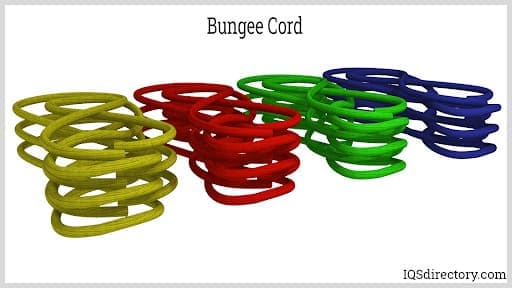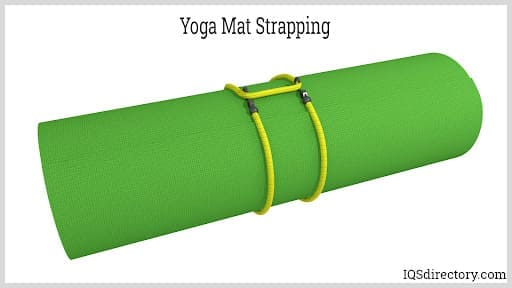Bungee Cord
Traditionally, ropes are used for tying, gripping, and fastening things together in order to protect them from any kind of damage. However, general ropes or cords prove to be efficient in the above-mentioned operations. But these lack the flexibility which can be found along with all other qualities in "bungee cord."
Technically, a bungee cord, also known as a shock cord, is an elastic rope made up of one or more elastic strands that form a core and are generally wrapped in a woven cotton or polypropylene sheath. The sheath does not stretch elastically, but it is braided with its strands spiraling around the core, causing it to squeeze the core when pulled longitudinally, translating the core's elastic compression to the sheath and cord's longitudinal extension.

Quick links to Bungee Cord Information
Materials Used in Making a Bungee Cord
Let us take a look what the types of raw material are used to manufacture bungee cord:
- A bungee cord's elasticity is due to the natural or synthetic rubber incorporated in its manufacturing. Synthetic rubbers, such as neoprene, are more resistant to air and sunlight than natural rubber, but they have less resilience and tensile strength.
- Natural rubber, also known as latex rubber, has high extensibility, resilience (ability to return to its former shape after being stretched), and tensile strength (the ability to be extended under load without breaking). It's an ideal material for bungee cords because of these characteristics.
- Natural rubber has the drawback of being only moderately resistant to air and UV radiation from the sun.
- The ropes used in bungee jumping are commonly made of natural rubber.
- The bungee cord's fabric cover can be woven from cotton or nylon yarn.
- Commercial bungee cord is normally covered in a single layer of nylon that is more abrasion resistant and has greater tensile strength.
- The mil-spec bungee rope must be covered in two layers of cotton. The cotton coating on certain bungee cords is the same as on mil-spec cords. Other carefully constructed bungee jumping cords have a natural rubber braided coating.
How Bungee Cords Are Made
Here is a brief demonstration of the steps involved in the manufacturing of bungee cord:
- Extrusion
- The rubber fibers are first extruded into long ribbons in step one. This is accomplished by inserting the rubber into a heated cylinder and pressing it through a tiny hole (or die) to form the required shape.
- Preparation
- The individual ribbons are coated with powdered talc or soapstone to keep them from sticking together when used outside or in hot weather.
- Weaving
- The ribbons are run through a braiding machine, which compresses many ribbons into a bundle and wraps it in a tight yarn weave. This weave may be any color and can be patterned to add variety.
Applications of Bungee Cords
Bungee cords have a long list of necessitating and creative applications, as given below:
- Protecting Cargo
- Bungee cords with clips are ideal for fastening baggage or weights in the backseats of cars. Nobody loves the notion of their belongings rolling around in the trunk while driving, but a bungee cord or two can solve the problem.
- Yoga Mat Strapping
- Bungee cords may be quickly tied around yoga mats to make them simpler to handle, transport, and store since they are so easy and effective.
-

- Adding Curtains and Nets
- Using bungee cord threading, one can add curtains and nets and then attach them to the poles from both ends to suspend them.
- Making Catapults for Kids
- Bungee cord can be used to make wooden catapults for kids to play with.

